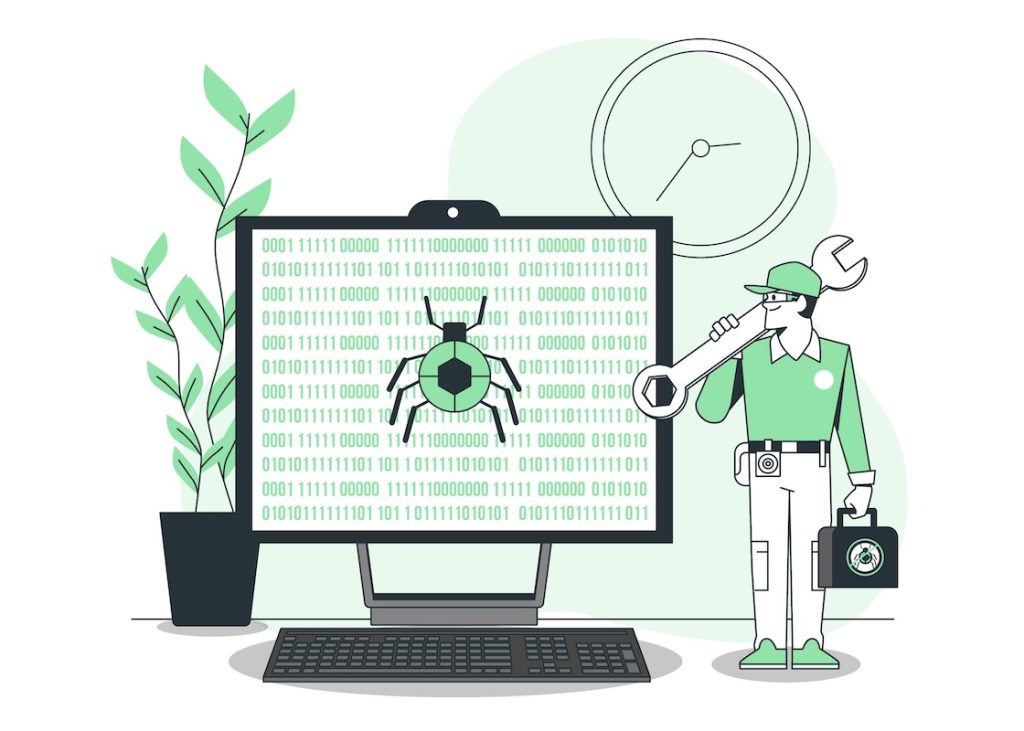A Law Enforcement Officer’s Guide to Ethical Hacking
Before diving into my journey, I need to address a fundamental question: What exactly is penetration testing? As a police officer, Understanding it from a law enforcement perspective – and explaining it to fellow officers – requires breaking down both the technical aspects and the legal framework that makes it legitimate.
Defining Penetration Testing
Penetration testing, often called “pen testing” or even “ethical hacking,” is the practice of testing a computer system, network, or web application to find security vulnerabilities that an attacker could exploit. Think of it as a controlled break-in attempt – authorized, documented, and conducted with the explicit goal of improving security rather than causing harm.
From my law enforcement background, I can draw an analogy that many officers will understand: Penetration testing is like having a professional locksmith test your home security by attempting to break in (with your permission) to identify weaknesses before real burglars do. The locksmith uses the same tools and techniques as a burglar, but with completely different intentions and legal authorization.
The Need For Penetration Testing
Since both hardware and software are designed, built, and configured by people, they inevitably contain the same potential for error that characterizes all human endeavors.
Penetration testing is essential because it addresses a fundamental reality of our digital infrastructure: computer systems are inherently fallible due to their human origins.
These errors manifest as security vulnerabilities, misconfigurations, coding mistakes, and flawed design decisions that can create entry points for malicious actors. When exploited, these weaknesses can result in devastating consequences including identity theft, financial fraud, data breaches that damage organizational reputation, regulatory penalties, and operational disruptions that can cripple businesses.

Penetration testing serves as a proactive defense mechanism, systematically identifying and exposing these human-introduced vulnerabilities before they can be exploited by attackers.
By simulating real-world attack scenarios, it reveals the true security posture of systems and networks, enabling organizations to remediate weaknesses and strengthen their defenses. This approach transforms the inevitable reality of human error from a liability into an opportunity for improvement, ensuring that the fallibility inherent in human-made systems doesn’t translate into catastrophic losses for individuals and organizations who depend on these technologies.
The Legal Framework: What Makes Penetration Testing “Ethical”
The difference between penetration testing and criminal hacking isn’t technical – it’s legal and ethical.

This is where my police experience becomes particularly relevant. The difference between penetration testing and criminal hacking isn’t technical – it’s legal and ethical. Both activities might use identical tools and techniques, but penetration testing operates within a framework of:
1. Explicit Authorization
Every penetration test must have written authorization from the system owner. This isn’t just good practice – it’s the legal foundation that separates ethical hacking from cybercrime. Without proper authorization, even well-intentioned security testing can result in criminal charges under the IT Act 2000.
2. Defined Scope
The authorization must clearly define what systems can be tested, what methods are permitted, and what boundaries cannot be crossed. This is similar to how search warrants specify exactly what can be searched and what evidence can be seized.
3. Professional Intent
The purpose must be to identify and help fix security vulnerabilities, not to steal data, cause damage, or gain unauthorized access for personal benefit.
4. Responsible Disclosure
Any vulnerabilities discovered must be reported to the system owner in a way that allows them to fix the issues before they’re exploited by malicious actors.
Types of Penetration Testing
Understanding the different types helps clarify its scope and methodology:
1. Network Penetration Testing

This relates to testing the security of network infrastructure, including routers, switches, firewalls, and servers. This is often what people think of when they hear “penetration testing.”
Real-world relevance: Many cybercrimes start with network vulnerabilities. Understanding how these vulnerabilities are identified will help me better understand how they can be exploited.
2. Web Application Penetration Testing
This relates to testing web applications (or websites) for vulnerabilities like SQL injection, cross-site scripting (XSS), and authentication bypass. Given how much of our digital life happens through web applications, this is increasingly important.

Police perspective: Online fraud cases often involve exploiting web application vulnerabilities. Understanding these vulnerabilities will help me ask better questions during investigations.
3. Wireless Network Penetration Testing

This relates to testing WiFi networks and wireless infrastructure for security weaknesses. This includes testing encryption, access controls, and configuration issues.
Investigation relevance: Criminals often use unsecured wireless networks to hide their activities. Understanding wireless security will help me better understand how they might operate.
4. Social Engineering Penetration Testing
This relates to testing human vulnerabilities through techniques like phishing emails, phone calls, or physical infiltration attempts. This tests people rather than just technology.

Law enforcement connection: Many cybercrimes involve social engineering. Understanding these techniques will help me recognize them in investigations and train others to avoid them.
5. Physical Penetration Testing

This relates to testing physical security controls like locks, access cards, and security cameras. This bridges the gap between traditional security and cybersecurity.
Officer perspective: This is closest to traditional security work that police officers understand, but it’s often integrated with digital attacks in modern crimes.
The Penetration Testing Process
Understanding the methodology helps clarify what penetration testers actually do:
Phase 1: Planning and Reconnaissance
- Passive Information Gathering: Collecting publicly available information about the target
- Active Information Gathering: Directly interacting with systems to gather information
- Threat Modeling: Understanding what attackers might target and how
Police analogy: This is like the initial investigation phase where we gather information about a suspect or crime scene before taking direct action.
Phase 2: Scanning and Enumeration
- Network Scanning: Identifying live systems and services
- Vulnerability Scanning: Using automated tools to identify potential weaknesses
- Service Enumeration: Gathering detailed information about running services
Investigation parallel: Similar to how we canvass a neighborhood, interview witnesses, and gather evidence before making arrests.
Phase 3: Gaining Access
- Exploit Development or Selection: Choosing the right tool for the vulnerability
- Initial Compromise: Gaining initial access to the system
- Establishing Foothold: Ensuring continued access for further testing
Law enforcement context: This is like executing a search warrant – using legal authority to gain access to areas normally protected.
Phase 4: Maintaining Access
- Privilege Escalation: Gaining higher-level access within the system
- Persistence: Ensuring access survives system reboots or security updates
- Lateral Movement: Moving from one system to others on the network
Criminal investigation insight: Understanding these phases helps me recognize attack patterns in cybercrime cases and understand the sophistication of different attacks.
Phase 5: Analysis and Reporting
- Evidence Collection: Documenting what was found and how
- Risk Assessment: Evaluating the potential impact of vulnerabilities
- Remediation Recommendations: Providing actionable advice for fixing issues
Police work parallel: This is like writing investigation reports – documenting findings, assessing their significance, and recommending actions.
Penetration Testing vs. Vulnerability Assessment
This distinction is very important in cybersecurity:
Vulnerability Assessment
- Identifies potential security weaknesses
- Uses automated scanning tools
- Provides a broad overview of security posture
- Relatively low risk to systems
Penetration Testing
- Attempts to exploit vulnerabilities
- Uses manual techniques and expert knowledge
- Provides proof of concept for actual attacks
- Higher risk but more definitive results
Police analogy: Vulnerability assessment is like a security survey that identifies potential entry points. Penetration testing is like actually attempting to break in through those entry points (with permission) to prove they’re real vulnerabilities.
The Business Case for Penetration Testing
From an organizational perspective, it provides:
1. Risk Management
- Identifies real-world attack paths
- Helps prioritize security investments
- Provides evidence for security decisions
- Demonstrates due diligence to stakeholders
2. Compliance Requirements
- Many regulations require regular security testing
- Helps meet compliance obligations
- Provides documentation for audits
- Demonstrates commitment to security
3. Incident Response Preparation
- Identifies potential attack scenarios
- Tests detection and response capabilities
- Helps develop better incident response plans
- Trains security teams on real attack techniques
Penetration Testing in Law Enforcement Context
Understanding this helps law enforcement in several ways:
1. Cybercrime Investigation
- Understanding attack methodologies
- Identifying evidence sources
- Evaluating technical testimony
- Reconstructing attack timelines
2. Internal Security
- Protecting police networks and data
- Securing sensitive investigations
- Maintaining operational security
- Preventing data breaches
3. Community Protection
- Advising businesses on security
- Understanding emerging threats
- Developing prevention strategies
- Building technical credibility
4. Legal Proceedings
- Understanding technical evidence
- Evaluating expert testimony
- Explaining technical concepts to courts
- Assessing damage and impact
Common Misconceptions
Let me address some misconceptions I’ve encountered:
“Penetration Testing Is Just Hacking”
Reality: Penetration testing is authorized, documented, and conducted with the goal of improving security. Criminal hacking is unauthorized and conducted for personal gain or malicious purposes.
“It’s Only About Finding Vulnerabilities”
Reality: Penetration testing also tests detection and response capabilities, evaluates security awareness, and provides realistic risk assessment.
“Automated Tools Do Everything”
Reality: While tools are important, successful penetration testing requires expertise, creativity, and manual analysis to identify complex attack paths.
“It’s Only for Big Companies”
Reality: Organizations of all sizes can benefit from penetration testing, though the scope and frequency may vary.
The Human Element
One aspect that resonates with my police experience is that penetration testing isn’t just about technology – it’s about people. The most sophisticated technical defenses can be bypassed through social engineering, insider threats, or simple human error.
This human element is something law enforcement officers understand well. We know that the strongest lock is useless if someone leaves the door open, and the same principle applies to cybersecurity.
Ethical Considerations
The ethical framework surrounding penetration testing is crucial:
Professional Ethics
- Maintaining confidentiality
- Avoiding unnecessary damage
- Respecting privacy
- Following professional standards
Legal Compliance
- Operating within authorized scope
- Following applicable laws
- Maintaining proper documentation
- Respecting intellectual property
Responsible Disclosure
- Reporting vulnerabilities promptly
- Providing actionable recommendations
- Following coordinated disclosure timelines
- Protecting sensitive information
The Future of Penetration Testing
As technology evolves, so does penetration testing:
Emerging Areas
- Cloud security testing
- IoT device security
- Mobile application testing
- AI and machine learning security
Evolving Methodologies
- Automated penetration testing
- Continuous security testing
- Red team exercises
- Purple team collaboration
Changing Threat Landscape
- Nation-state attacks
- Advanced persistent threats
- Supply chain attacks
- Zero-day exploits
Key Takeaways
- Penetration testing is authorized security testing that uses the same techniques as attackers but with legal permission and ethical intent
- Authorization, scope, and intent are the key factors that separate ethical hacking from criminal activity
- The process is methodical and documented, similar to police investigation procedures
- Tools are important but expertise is crucial for effective penetration testing
- The human element is often the weakest link in security systems
- Legal and ethical frameworks are essential for legitimate penetration testing
- Understanding penetration testing helps law enforcement investigate cybercrimes and protect their own systems
The journey from badge to buffer starts with understanding – understanding the tools, the methodology, and most importantly, the ethical and legal framework that makes this work legitimate and valuable.
For more posts on Penetration Testing, click here.
For more posts on Cybersecurity, click here.

Brilliantly explained! Loved how you connected police work with penetration testing in such a simple and relatable way. The focus on legal and ethical boundaries makes it easy to understand the real difference between hacking and ethical security testing. Great read — looking forward to more!